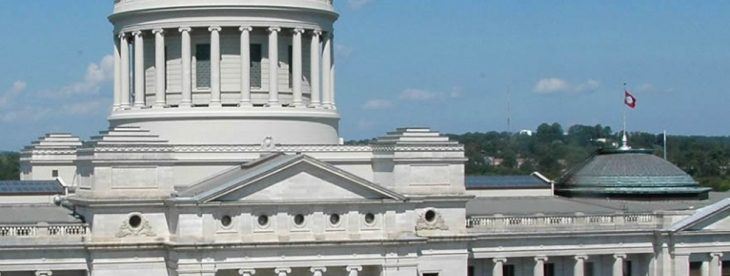Legislative leaders want just-passed high-cost special ed funding removed from adequacy report
by October 10, 2016 6:56 pm 179 views

The speaker of the House and the chairman of the House Education Committee want to remove from the state’s “adequacy report” catastrophic special education funding adopted a week ago.
The House and Senate Education Committees are preparing the adequacy report to be presented to Gov. Asa Hutchinson by Nov. 1. The biennial report governs how state funds are spent on K-12 public schools. It was created as a result of the Supreme Court’s Lake View decision requiring the state to provide an equitable and adequate education to all students.
Committee members voted last week to add $30 million over the next two years – an extra $10 million in 2016-17 and an extra $20 million in 2017-18 – for a fund that helps school districts pay for very high cost special education students.
Rep. Bruce Cozart, R-Hot Springs, the House Education Committee, said Monday (Oct. 10) after a meeting of the committees that it was a mistake to put the catastrophic funding in adequacy, where it’s never been before.
“I would really like for it not to be where it’s not supposed to be,” he said.
He later added, “That means you have to figure it in adequacy every time.” Otherwise, the state faces a potential adequacy-related lawsuit. Cozart said he would have liked to have expunged last week’s vote Monday but faced opposition among some members, and there weren’t even enough senators present to do so.
Speaker Jeremy Gillam, R-Judsonia, a member of the House Education Committee, said the vote last week occurred when many members were not present and were told there wouldn’t be a vote. He said he didn’t want a vote Monday because many members again were not present. Gillam said the big issue is the mechanism of placing the funding in adequacy, not the dollar amount, though that issue is being discussed as well.
“There’s so many other conversations that haven’t even remotely taken place yet,” he said in an interview. He later added, “We have a lot of members within the General Assembly that want a whole lot of things done, but we don’t just allow anybody and everybody to use the cover of adequacy to get what they want.”
Gillam said the Legislature should be careful about adding anything to adequacy, in part because school districts are not mandated to use the money as the Legislature intends.
“You see that consistently is, we’ll fund line items in the matrix, and then the local school districts won’t spend a dime of that money on what we thought (the money) was going to,” he said.
Another unresolved issue is whether some of the funding would go to health care services, not education, he said.
On the catastrophic funding, districts are reimbursed for the first $15,000 of the cost of educating one of the students, then 80% of the next $15,000 to $50,000, and 50% of the costs between $50,000 and $100,000. The highest cost student for 2015-16 cost $78,217, according to the Department of Education.
The number of students eligible for the funding has increased from 487 in 2010-11 to 1,136 in 2014-15 as a result of a change in the rubric the Arkansas Department of Education uses to identify eligibility. The previous rubric applied only to students with low IQs. The new rubric includes students with autism or other disabilities who may have high IQs but need supervision. Because of the growth, the fund was $19.31 million short in 2014-15, so school districts were not fully reimbursed their costs.
On Monday, the committees voted to expunge a vote last week that had changed the definition of “adequacy” to include the words “sufficient education and preparation to enable each student to become career-ready.” They then voted to create a new definition that included the words “and opportunities for students to develop career readiness skills.”
Last week’s definition all but required that students must be career ready, which would open the state up to an adequacy-based lawsuit if they aren’t, said Cozart.
“You can’t really put that guarantee in the definition,” he said after Monday’s meeting. “They can be taught and they can be headed that way, but we can’t (assure) them definitely that they’re going to have everything they need.”
Cozart said a proposal to pull school transportation funding out of adequacy and fund it separately probably will not happen this year. Transportation is funded on a per pupil basis, so it easily covers costs for some compact districts but not for far-flung ones. Cozart said he would prefer transportation be funded in a separate category so changes would not be subject to an adequacy lawsuit. Funding changes, phased in over time, should be based on route miles, miles traveled on dirt roads, and other factors, he said.
But with the deadline for submitting the report to Hutchinson fast approaching, there’s not time to change the formula.
“I’m going to say it’s probably a no for this year,” he said.
Cozart said it’s possible more funding could be added for transportation on a per pupil basis.
